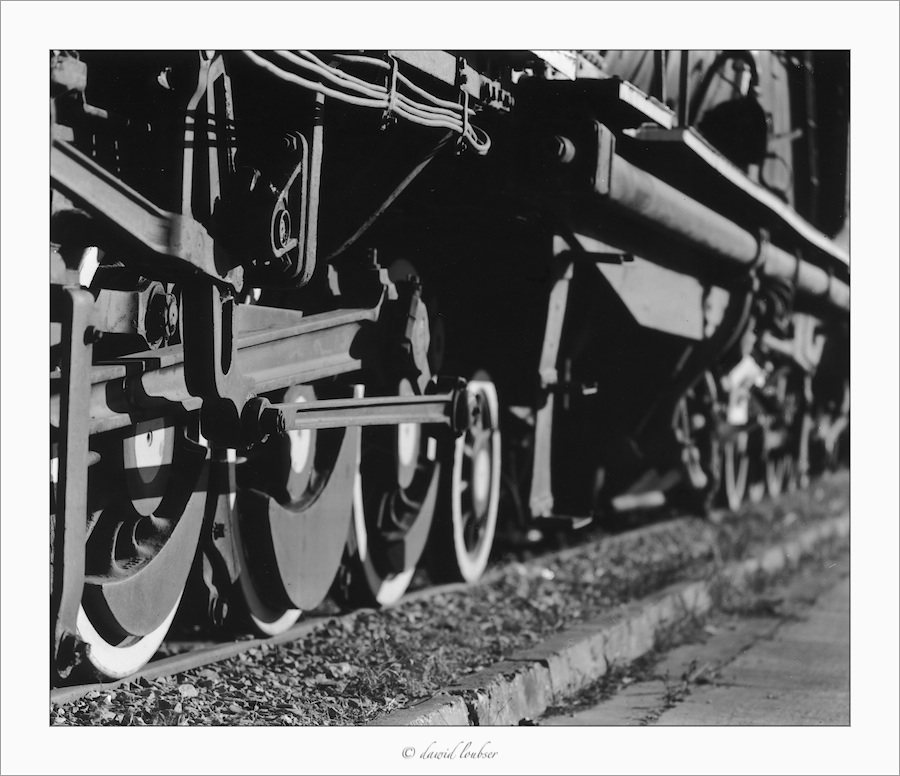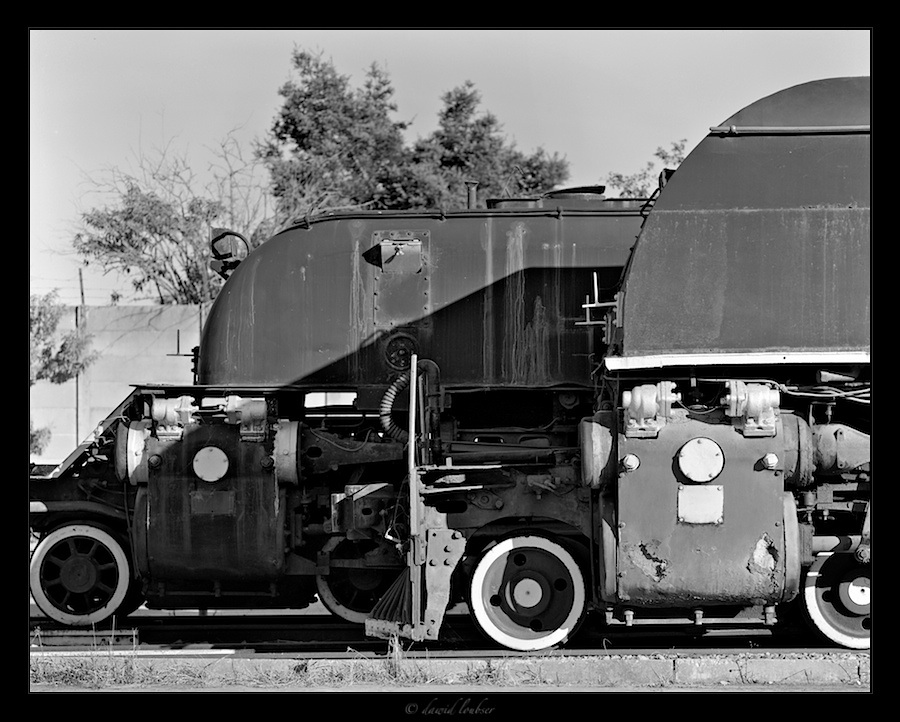Dawid Loubser
Member
Well, not that this is news - people have known for about 150 years - but I have done my first contact print, and it's quite something to behold. I get the feeling that the conventional calculations in terms of the human eye being able to see such-and-such resolution on a print do not tell the full story. Otherwise, I should not be able to perceive a difference between this and small prints from medium-format negatives.
Perhaps like those so inclined to pour ridiculous sums of money into high-fedility audio (at ever diminishing returns), I can now see that there is that something about contact prints - hi-fi imaging?
My chosen image is a simple one. I am a sucker for shallow depth of field (one of the reasons I moved into large format was to gain the ability to produce shallow-focus images with perfect image quality in the in-focus areas, and gorgeous smooth tones even at ISO 1600) and I am a sucker for steam locomotive details:

I specifically composed this image for a contact print - i.e. it has to be minimalist, and not packed with detail across the frame. A "busy" contact print could never work, in my opinion - you need paper real estate for the eye to take it all in.
A posted scan does not prove much - but on the paper, it's something else. I leaps off the page, packed with infinitesimally fine detail.
I will probably continue to enlarge most of my large format work, but I just wanted to share that I too had discovered the joys of contact printing. Oh no, I must be getting old... Or one of those weird hi-fi guys!
P.S. The real reason for this thread is to coax Asher out of hiding, we want to see some of your contact prints with your 8x10in and your Super-Symmar 150XL... Please?
Perhaps like those so inclined to pour ridiculous sums of money into high-fedility audio (at ever diminishing returns), I can now see that there is that something about contact prints - hi-fi imaging?
My chosen image is a simple one. I am a sucker for shallow depth of field (one of the reasons I moved into large format was to gain the ability to produce shallow-focus images with perfect image quality in the in-focus areas, and gorgeous smooth tones even at ISO 1600) and I am a sucker for steam locomotive details:

I specifically composed this image for a contact print - i.e. it has to be minimalist, and not packed with detail across the frame. A "busy" contact print could never work, in my opinion - you need paper real estate for the eye to take it all in.
A posted scan does not prove much - but on the paper, it's something else. I leaps off the page, packed with infinitesimally fine detail.
I will probably continue to enlarge most of my large format work, but I just wanted to share that I too had discovered the joys of contact printing. Oh no, I must be getting old... Or one of those weird hi-fi guys!
P.S. The real reason for this thread is to coax Asher out of hiding, we want to see some of your contact prints with your 8x10in and your Super-Symmar 150XL... Please?

